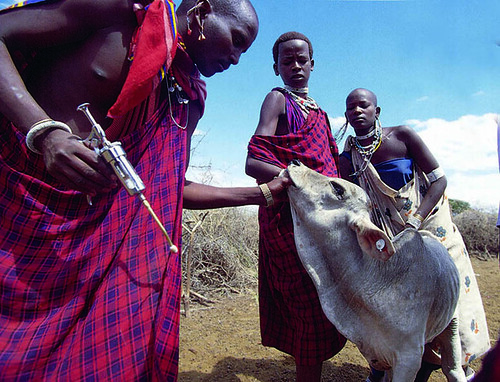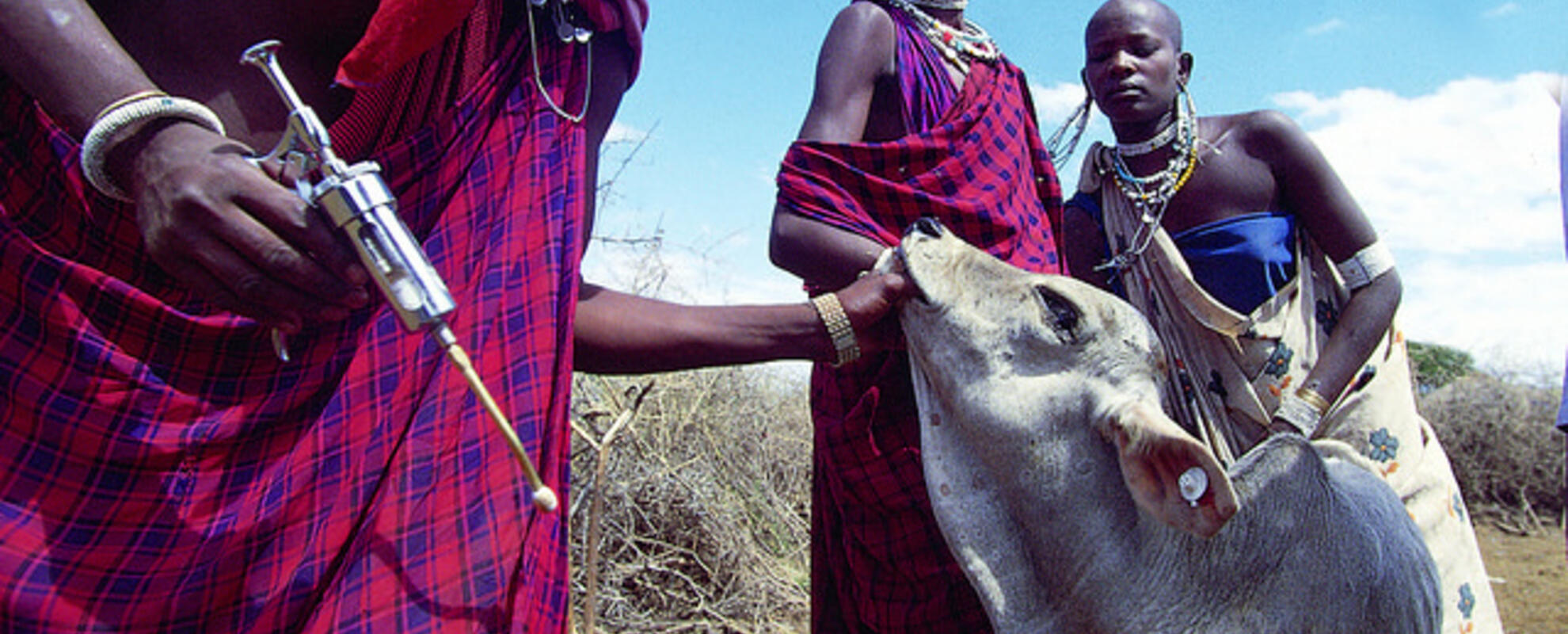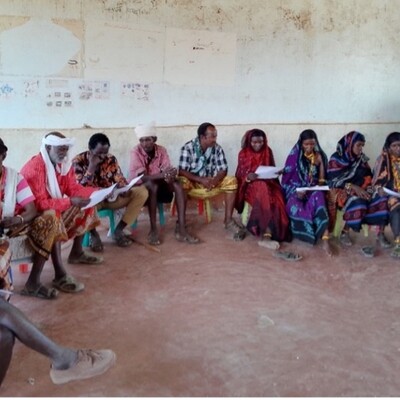
Enhancing awareness of equity issues in the Malawian veterinary medicine sector
 Maasai help treat cattle with antibiotic as part of ‘live’ East Coast fever vaccine (photo credit: ILRI/Stevie Mann).
Maasai help treat cattle with antibiotic as part of ‘live’ East Coast fever vaccine (photo credit: ILRI/Stevie Mann).Capacity development is integral to successful livestock research for development that delivers outcomes and impact. Guided by its gender team, the International Livestock Research Institute (ILRI) uses research to develop livestock- and evidence-based solutions for investment by the global community in enhancing the capacities, livelihoods and roles of women and girls in their communities.
Recently, ILRI researchers from the Policies, Institutions and Livelihoods (PIL) Program and the collaborative CGIAR Research Program on Agriculture for Nutrition and Health (A4NH) developed and implemented a two-day training curriculum on equity and gender for the finalists from the first veterinary class at Malawi’s Lilongwe University of Agriculture and Natural Resources. The aim was to enhance their awareness of equity issues in veterinary medicine and to empower them to understand how equity affects their work and the people who own or manage livestock. Awareness of equity issues will also allow them to understand when to seek further input from equity practitioners to enhance the impact of veterinary work.
In practice, inequity refers to differences that are unnecessary and avoidable, but are also considered unfair and unjust in the context of what is going on in the rest of society. It is a common characteristic among people of different genders, incomes, life stages, ages (youth vs older), ethnicities/ castes and people with/without disability. Despite clear tests of avoidability and fairness, equity and gender approaches are difficult to operationalize. The training had four objectives:
- To introduce concepts of equity, gender and empowerment
- To demonstrate ways in which (in)equity affects veterinary work
- To demonstrate how equity can be integrated in veterinary work
- To give practical lessons on how to implement equity and gender in veterinary work
Introduction to concepts of equity, gender and empowerment
In responses to a quiz at the beginning of the course, the 12 trainees demonstrated some understanding of concepts associated with equity, with many of the responses being intuitively derived. These responses enabled the trainers to best augment the trainees’ understanding of the subject. A presentation aided the training on definitions. Concepts were drawn, with slight adaptations, from the Equity in A4NH Research work. Terms such as equality and empowerment that are easily associated with equity were identified and defined.
Introduction on how equity affects veterinary work
Discussions were then used to share cases of inequity experienced by the trainees in their veterinary work, some of which are highlighted below.

Gender inequity topics topped the list of examples on inequity given by students. This finding demonstrates the pervasiveness of gender with inequity and it might, therefore be correct to state that gender inequity is the most common form of inequity. This observation supports Kofi Annan’s statement, ‘Gender equality is more than a goal in itself. It is a precondition for meeting the challenge of reducing poverty, promoting sustainable development and building good governance’ (UNDP Africa Blog).
How equity can be integrated in veterinary work
This training component challenged trainees to apply the new knowledge they acquired on equity, gender and associated concepts into research proposals they were developing for small projects as part of the requirements for the attainment of their veterinary degree.
Providing practical lessons on how to implement equity and gender in veterinary work
The students were taught about research design and its elements (e.g. research strategies and methods related to data collection and analysis); methodologies such as qualitative, quantitative and a mixture of both these methods; and the three types of research – formative, action and evaluative. They then applied their new skills by developing equity integrated proposals to address Malawi-specific animal-related challenges, such as the recent death of hippos from anthrax in one of the game reserves.
To further help the students show the area of equity used and the extent to which the various components of their study delved into equity issues, a traffic light tool was introduced (see example in table below). The tool seeks to establish if the equity component has been used explicitly, i.e. used in the analysis (green colour); superficially/implicitly – mentioned but not used in analysis (orange colour) or lacking (red colour). The extent of use of a component should be established from the onset. The colours of the lights may also be replaced with signs such as ++ for green; + for orange and – for red.
 Adapted from the tool in page 27-30 of Harris, J. and Mitchell, B. 2017. Equity in A4NH research: A review of current work and future opportunities. IDS.
Adapted from the tool in page 27-30 of Harris, J. and Mitchell, B. 2017. Equity in A4NH research: A review of current work and future opportunities. IDS.Finally, the trainees were instructed on participatory epidemiology, data collection methods such as focus group discussions, and data collection tools like seasonal calendars, activity clocks and ranking. The students also learned how to develop an impact pathway and budget.
Lessons learnt
The capacity building initiative on equity and gender resonates well with the CGIAR agenda of engaging the youth and women in livestock development in innovative and beneficial ways. CGIAR’s A4NH Gender, Equity, and Empowerment (GEE) Unit supports the integration of gender and equity in research and activities and this training activity, therefore, falls in GEE’s mandate.
The students were eager to learn and adopted the equity approach easily. Interestingly, for every context and situation discussed exhaustively, gender emerged as a key area where inequity was anticipated. Gender became explicit as one of the objectives to be considered in research questions and a definite variable in the anticipated analysis.
The students had developed research proposals before the training and now they can benefit from integrating the learned concepts into the proposals for a greater impact. These proposals are already funded, reviewed and have been appraised for integration of the equity component before implementation.
Teaching the first group of Malawian veterinary students graduating from a national institute, makes this a novel intervention. It is encouraging because the training was supported by two veterinary department lecturers from the Lilongwe University and two partners that volunteer closely with the veterinary department.
This blog was written by Elizabeth Waithanji a gender specialist consulting for PIL and A4NH. She can be reached on elizabeth.waithanji[at]gmail.com
















